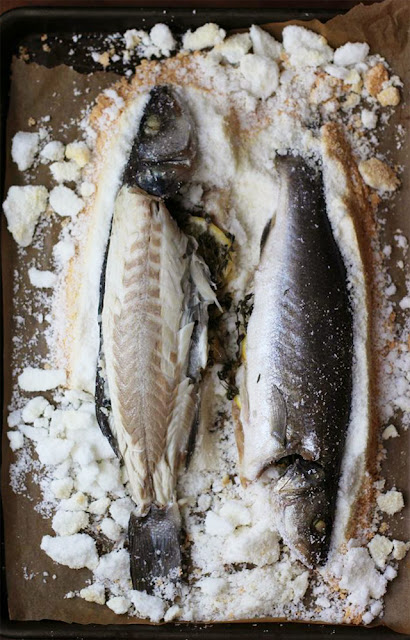As I walk up and elbow my way to the front of Franco's crowded display of vegetables, fruits, flowers and freshly laid eggs, I notice the hand painted sign. It reads: "Open on Wed-Thur-Sat too. Thank you, spring."
And indeed I see why Franco has decided to triple his effort, the bounty on sale is virtually amazing. Baby spring zucchini topped with flowers, redolent red peppers, slender eggplant, bright green cratefuls of garden greens–trimmed and already washed, juicy cherry tomatoes the size of a fingernail, fave, chickory, deep purple artichokes, the very last puntarelle of the season, asparagus, radicchio tardivo; and then crisp apples, the curiously fuzzy local kiwi variety, blood oranges and stout pears, warming in the sun.
When it's my turn finally, Franco smiles, snaps a pod and shells me a tiny handful of exquisite fresh baby peas. The sweet, green globules burst in my mouth bringing back forgotten sensory memories.
Needless to say, even if Franco will be around the neighborhood more often, I ended up buying a large weekly supply of fruits and vegetables. I usually never shop with a list in mind, I just let the ingredients at hand inspire me.
So besides the produce and the bunch of lilacs that now make my house smell like paradise, I also bought some of Franco's homemade roasted black olives.
I soaked them in water and rinsed them well, letting them drip dry.
Tossed them in a bowl with a little olive oil, cracked black pepper, a wee pinch of salt and omitted the peperoncino flakes I usually add to the dressing, because my son wanted to taste them.
Then I chopped in a slice of mandarin orange complete with its rind, and skewered a fork in the largest clove of garlic I could find, and used that to stir.
I then let the whole thing marinate for a few hours and later enjoyed a delicious aperitivo of zesty citrus-flavored roasted olives with a glass of Lacrima di Morro d'Alba, a lovely red wine from Le Marche region.
The bread is still warm. Birds chirp and the sun is shining.
As Franco so plainly puts it–thank you, spring.





















